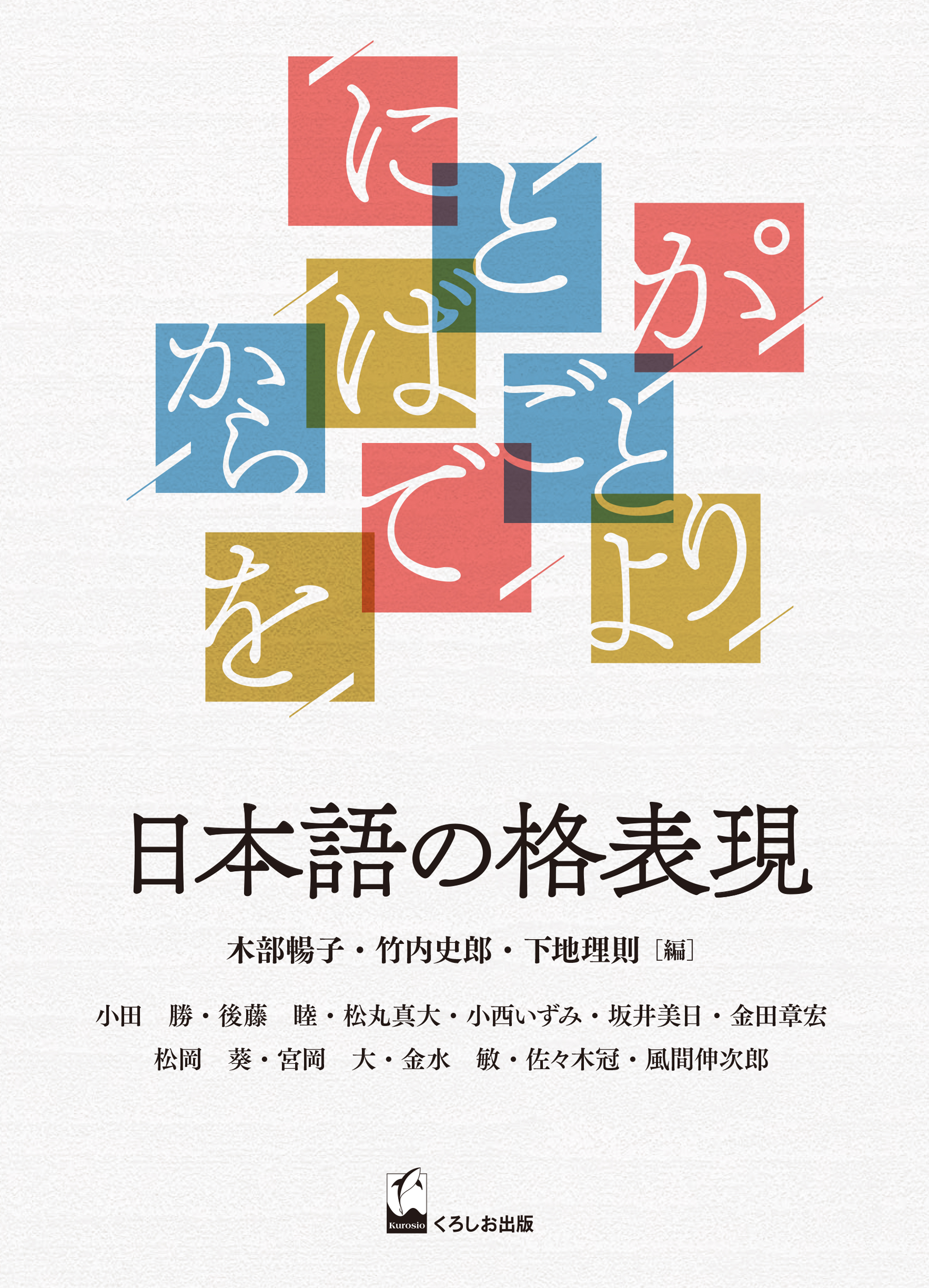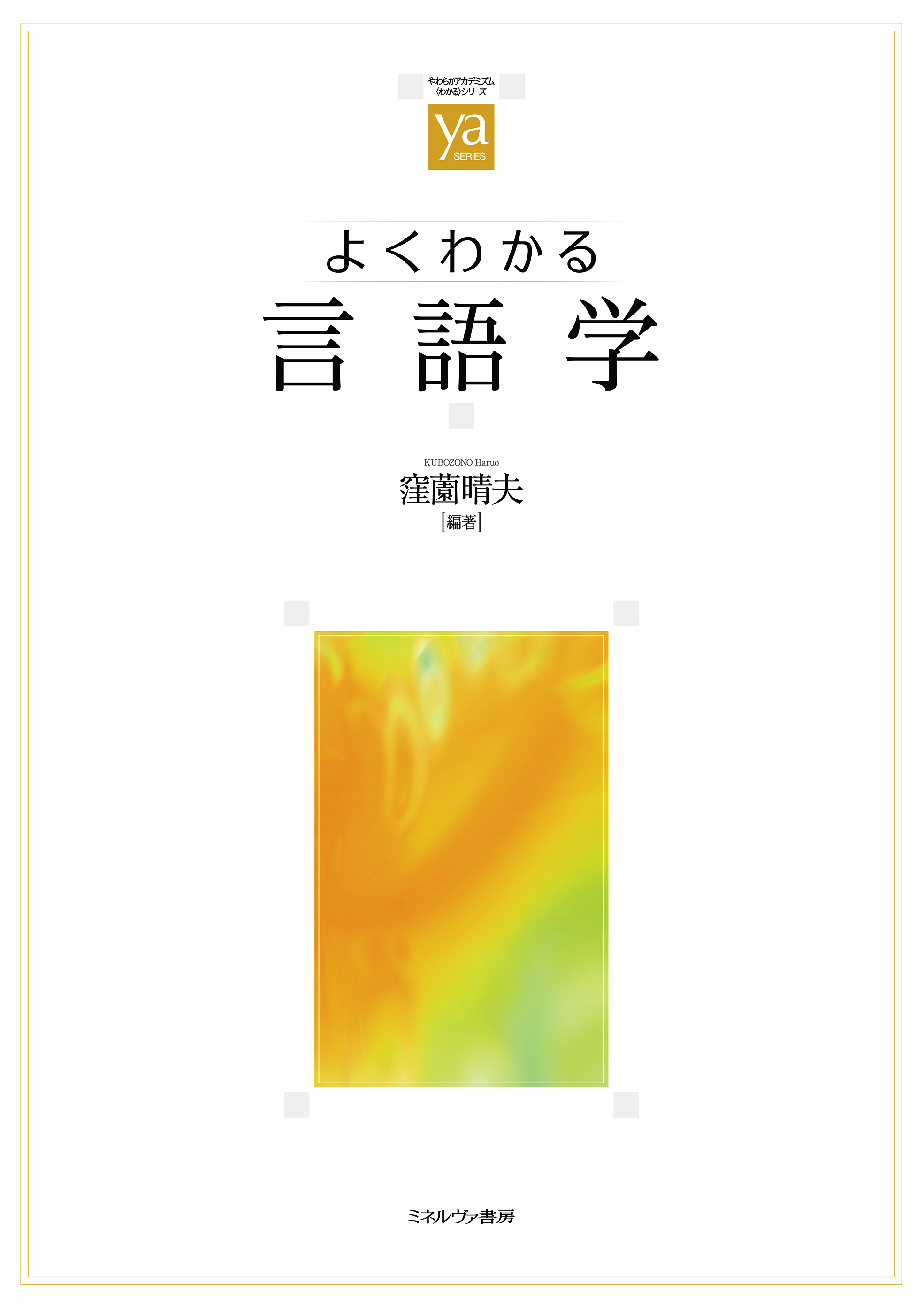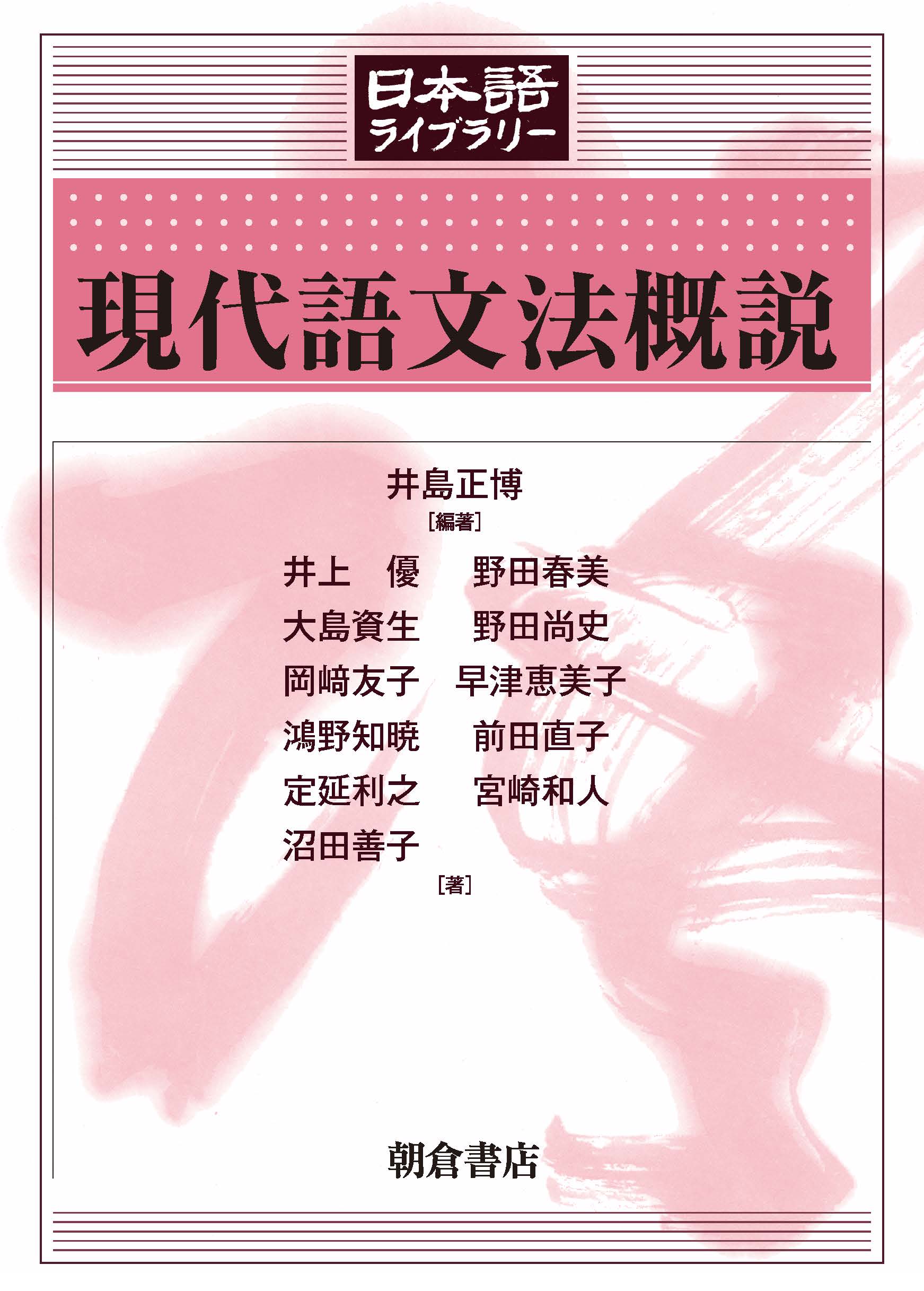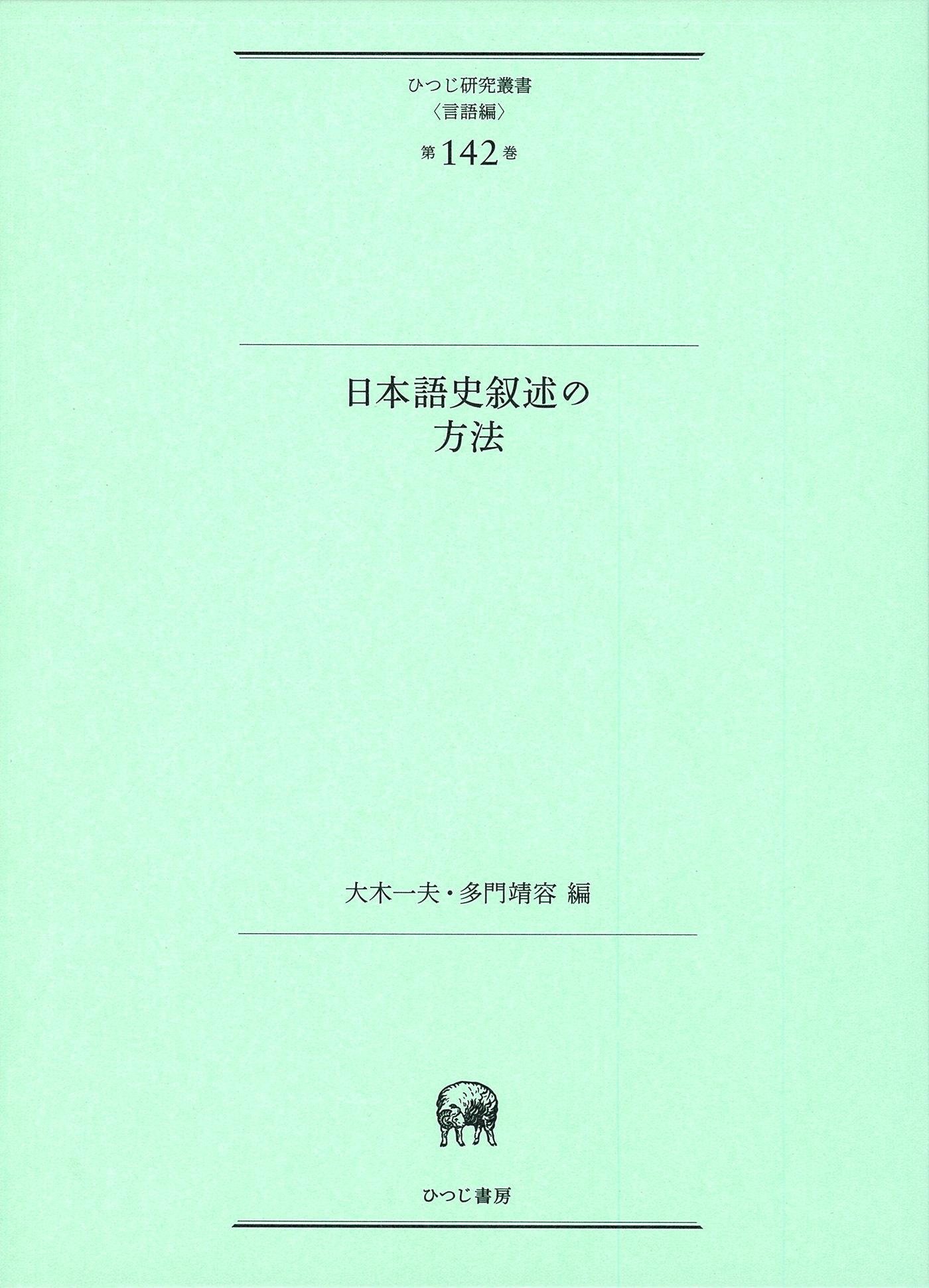
Title
Nihongo no Kaku-hyogen (Grammatical cases in Japanese)
Size
310 pages, A5 format
Language
Japanese
Released
March 24, 2022
ISBN
978-4-87424-891-1
Published by
Kurosio Publishers
Book Info
See Book Availability at Library
Japanese Page
In the sentence Hanako ga hon o yomu “Hanako reads a book,” the postpositional particle ga indicates that Hanako is the agent of the act yomu “read” and the subject of this sentence overall, and the postpositional particle o indicates that hon is the target of the act and the object of the sentence. Such morphological means of expressing the semantic and grammatical relationship between noun phrases and predicates, like these postpositional particles in Japanese, is called grammatical case, or simply 'case'.
In modern standard Japanese, particularly in the formal written language, the subject of intransitive and transitive sentences is indicated by the postpositional particle ga, and the object of transitive sentences is indicated by the postpositional particle o, such as in ame ga furu “The rain is falling” and Hanako ga hon o yomu. However, in informal speech, the object is often expressed without a postpositional particle, such as in Hanako ga hon yomu; and the subject of an intransitive sentence can also have its postpositional particle removed, such as in A, ame futte kitayo “Oh, the rain is starting to fall.” Looking at the dialects of various regions, there are dialects that use different postpositional particles such as no for the subject and ba or goto for the object, and dialects that can express the subject of a transitive sentence without a particle such as Hanako hon yomu. Additionally, in ancient Japanese, subjects and objects were often expressed without postpositional particles. The primary function of the postpositional particle ga was originally adnominal modification, such as in Hitomaro ga uta (Hitomaro no uta, “A poem of Hitomaro”), but later came to express the subject.
The diversity of cases in various dialects of Japanese and the history of Japanese cases have been described and discussed as individual linguistic facts. However, when there are multiple means of expressing subjects and objects in the same dialect and period (the presence or absence as well as different types of postpositional particles), there are many unclear aspects regarding the criteria for distinguishing between them. Furthermore, it is unclear whether any common principles could be found in case systems and variations across dialects and eras, and what characteristics the Japanese case system has from the general perspective of language.
In modern standard Japanese, the postpositional particle wa (ha) is used when the subject is the topic of the sentence (i.e., the matter to be explained or commented on, such as in Hanako wa nani o shite iruno? “What is Hanako doing?” / Hanako wa hon o yonde iruyo “Hanako is reading a book”); and the postpositional particle ga is used when the subject is not the topic of the sentence, as in A, Hanako ga iru “Oh, there is Hanako” and Dare ga iku? “Who is going?” / Hanako ga iku “Hanako is going.” The question of how to express subjects and objects is related to structure at the level called “information structure,” and these relationships also seem to differ depending on the era and dialect.
This book attempts to clarify the structure and principles of Japanese cases, including in ancient Japanese and modern dialects, based on the awareness of the above problems. This book consists of three parts: Part 1, “The cases in ancient Japanese”; Part 2, “The cases in Japanese dialects”; and Part 3, “The Japanese cases and linguistic typology,” in a total of 13 chapters. These 13 chapters are independent articles, and the reader may begin reading from any chapter. However, there are many common points across multiple chapters, such as the non-particle marking of subjects and objects as well as the relationship between information structure and case. Therefore, reading the chapters together will further the reader’s understanding of the topic.
(Written by KONISHI Izumi, Associate Professor, Graduate School of Humanities and Sociology / 2022)



 Find a book
Find a book





